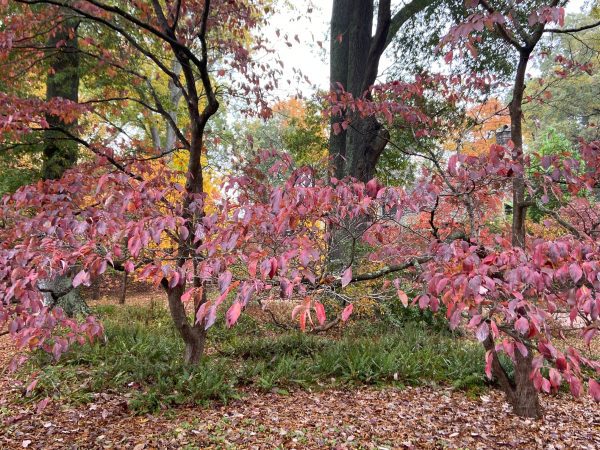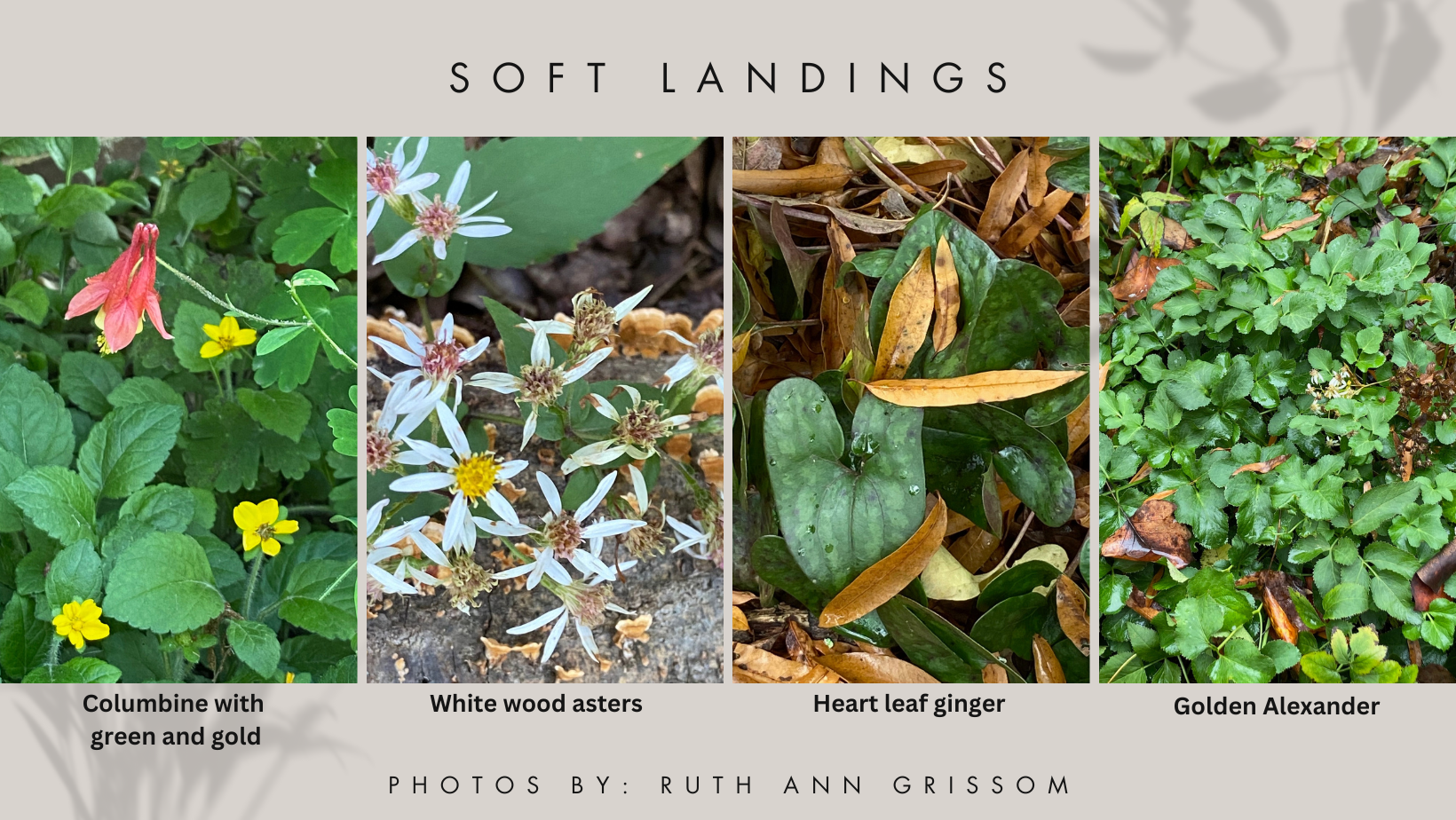Soft Landings

As leaves waft through the air and settle on the ground in the coming weeks, it’s a good time to consider that many butterflies, moths, fireflies, bees and other beneficial insects spend at least some portion of their life cycle in or under the leaf litter beneath our native trees. The term soft landing might be familiar in an economic context, but it can also apply to wildlife.
The Soft Landings concept is the brainchild of Leslie Pilgrim, a conservation gardener and executive director of Neighborhood Greening, a nonprofit in Minneapolis dedicated to environmental education and stewardship (Neighborhood Greening | Dedicated to Community Environmental Education and Stewardship). She made the connection after attending a presentation by author and entomologist Doug Tallamy. “Poor oak tree,” Tallamy had said, as he showed a photo of a magnificent tree in a park-like setting of neatly cut grass. “It will never be able to fulfill its true function as a keystone species.”
Tallamy’s research has found that just 14% of native plants serve as hosts for 90% of all lepidoptera species. “It isn’t just milkweed,” Pilgrim said, referring to the now-famous perennial that acts as the sole host plant for monarch butterflies. “Native trees can be very robust hosts.” Indeed. Here in the Piedmont, oaks collectively support nearly 500 species of butterflies and moths. Oaks are at the very top of Tallamy’s list of keystone species, so important to holding the local food web together that he has written an entire book about them, The Nature of Oaks: The Rich Ecology of our Most Essential Native Trees.
While their caterpillars feed on leaves in the canopy, butterflies and moths also need the right conditions under a tree at various points in their life cycle (Leave the Leaves! | Xerces Society). For example, great spangled fritillaries lay their eggs in the leaf litter. Luna moths pupate there, their cocoons disguised as dead leaves. Mourning cloak butterflies actually overwinter as adults in the leaf mulch, which explains why they can be spotted flitting around our region on warm, sunny days in February.
Inspired by Elsa Cousins’ simple and visually appealing graphic illustration showing the importance of keystone trees, Pilgrim teamed up with author and pollinator conservationist Heather Holm (Bee and Pollinator Books by Heather Holm – Attract, Observe and Identify Pollinators and Beneficial Insects with Native Plants (pollinatorsnativeplants.com)) to do the same for Soft Landings. The result is a stylistically similar companion piece. Soft Landings – Neighborhood Greening
Through Neighborhood Greening and other volunteer efforts, Pilgrim and Holm have helped establish Soft Landings at numerous churches, schools and municipal parks in the Twin Cities. In one project, the group simply put up a small fence around a large tree and let the leaves pile up.
 To achieve a Soft Landing, you first need to avoid mowing under the dripline of a keystone tree. To kill the grass under your tree, please don’t use landscape fabric. It creates a barrier that prevents species from being able to burrow into the soil. Instead, lay down a thick layer of newspaper or cardboard. Both will decompose quickly and help enrich the soil. Cover it with leaves rather than wood mulch. Insects have evolved with leaf mulch, and its structure is less dense.
To achieve a Soft Landing, you first need to avoid mowing under the dripline of a keystone tree. To kill the grass under your tree, please don’t use landscape fabric. It creates a barrier that prevents species from being able to burrow into the soil. Instead, lay down a thick layer of newspaper or cardboard. Both will decompose quickly and help enrich the soil. Cover it with leaves rather than wood mulch. Insects have evolved with leaf mulch, and its structure is less dense.
Adding native grasses and forbs under the dripline is a bonus because they can also provide pollen and nectar. Native shrubs can also be helpful, but Pilgrim stresses the need to protect the root system of established trees. She recommends using plugs when possible. It’s best to avoid anything larger than a one-gallon size.
Charlotte is known for its canopy of mature willow oaks, especially in older urban neighborhoods like mine. Now, when I see them gracing a yard or park or planting strip, surrounded by expanses of turf grass, I think of Tallamy’s lament. Rather than get discouraged, I try to focus on the potential. We’re fortunate to already have so many keystone trees already in place. To have a dramatic impact on populations of butterflies, moths, fireflies and other beneficial insects, all we need to do is tweak the way we manage the ground beneath them.
This would be satisfying on so many levels. “People want to do something to help the environment, but sometimes the problems seem so overwhelming,” Pilgrim said. “Soft Landings is something you can get your arms around.” You can create your own little mini-ecosystem while also adding beauty to your yard.
Here are a few of my tried-and-true favorites for creating a native ground cover. These plants are happy in part-sun or part-shade, a situation that’s common under the high canopy of a mature keystone tree. While they do appreciate some moisture, most are also fairly drought tolerant once they’re established.
Christmas fern (Polystichum acrostichoides)
Southern shield fern (Thelypteris normalis)
Gray’s sedge (Carex grayi)
River oats (Chasmanthium latifolium)
Heartleaf ginger (Hexastylis virginica)
Green and gold (Chrysogonum virginianum)
White wood aster (Eurybia divaricate)
Robin’s plantain (Erigeron pulchellus)
Golden Alexander (Ziziz aurea)
Coral bells (Heuchera americana)